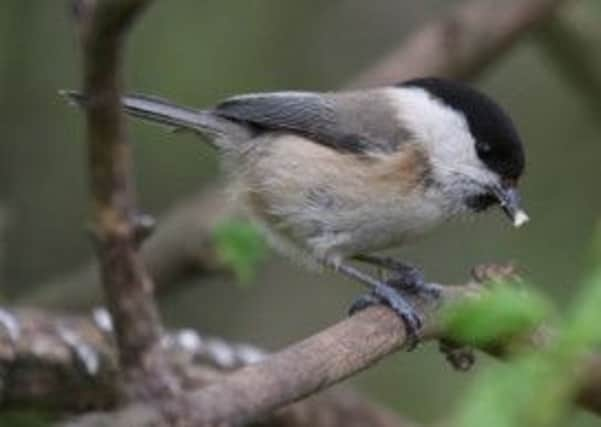Birdwatch: Species that prove an ID test


The two are so similar that it was not until 1897 that the willow tit was identified as a species in its own right rather than a race of the marsh tit.
Marsh tits, despite their name, tend to favour deciduous woodland while willow tits have a liking for damper scrubby habitat where there are stands of birch and alders.
Advertisement
Hide AdAdvertisement
Hide AdThis is probably because willow tits excavate their own nest holes in well rotted trunks while marsh tits utilise existing holes.
Both species visit bird feeders close to breeding sites in winter with the RSPB’s Fairburn Ings and Yorkshire Wildlife Trust’s Potteric Carr reserves among the places to look for willow tits and the feeders at Forge Valley near Scarborough regularly visited by marsh tits along with a wide variety of other woodland birds.
Many of the supposed identification features to tell the two species apart have now been discredited.
The black crown of the marsh tit was said to be neater and glossier than that of the willow; the black bib of the willow larger than that of the marsh, and the willow tit was said to have a pale panel in the wing, but all these have been found to vary in both species and so are unreliable for identification.
Advertisement
Hide AdAdvertisement
Hide AdThere are differences in head patterns with the willow tit appearing to have larger white ‘cheeks’ than the marsh while the marsh has a pale patch on the bill which the willow lacks.
But the most reliable way to tell the two apart is by the calls. The marsh tit has an unmistakable pit-it-choo call while that of the willow tit is a buzzing nasal chick-a-dee.
The willow tit has the dubious distinction of being Britain’s fastest disappearing bird with numbers crashing by 83 per cent since the 1950s while marsh tits have also declined but at a less rapid rate. Increased competition from other tit species could be to blame.
Some attempts are being made to help willow tits. On the Wigan Flashes in Lancashire birch logs are being tied to other trees so that when the birch logs rot there will be more potential nest sites for the reserve’s willow tits. It is an idea that might also be tried out in Yorkshire.
Advertisement
Hide AdAdvertisement
Hide AdGull roosts have continued to grow across the region with ten different species seen in the Angler’s Country Park and Wintersett roosts including Iceland, glaucous, Caspian, yellow-legged and a kittiwake.
The Spurn reserve has had its first ever winter record of a sandwich tern with one seen on several days. Further up the coast five tundra geese were seen at Hunmanby Gap and others at Scaling Dam north of Whitby.
Six Bewick’s swans were still present this week at Swinefleet Common near Goole.
A lesser-spotted woodpecker and green woodpecker were seen at the Potteric Carr reserve, a Cetti’s warbler has been calling and 30,000 starlings are coming in to roost on the Low Ellers Marsh.